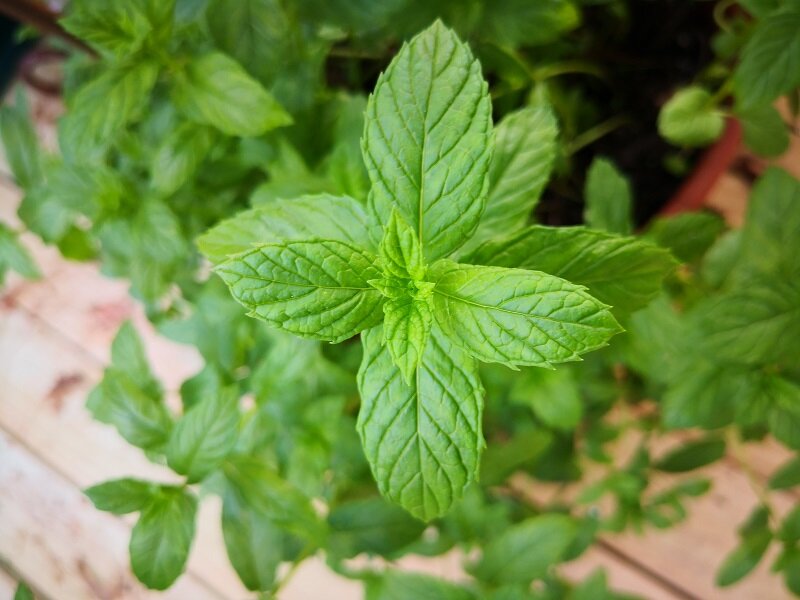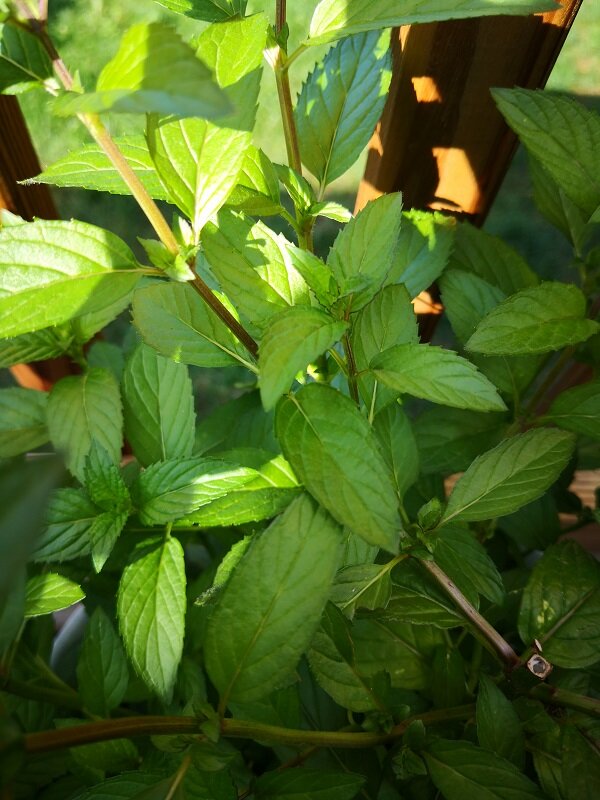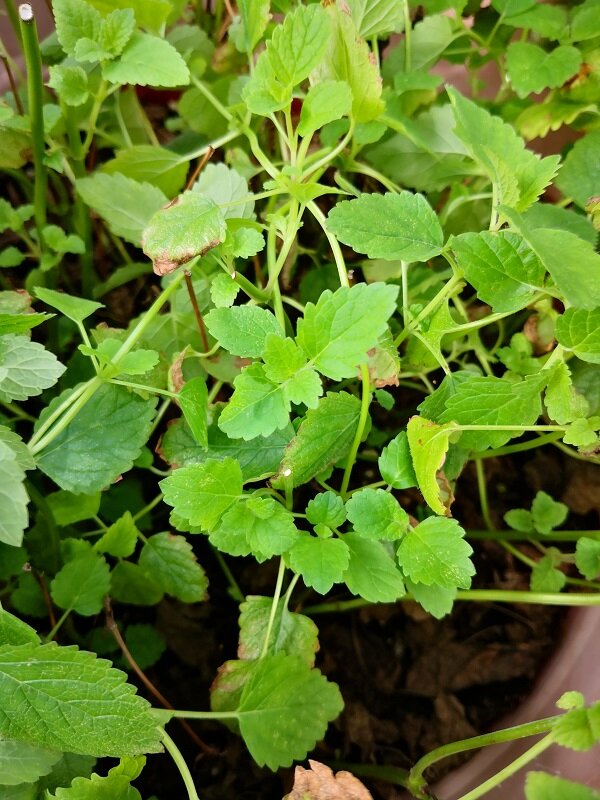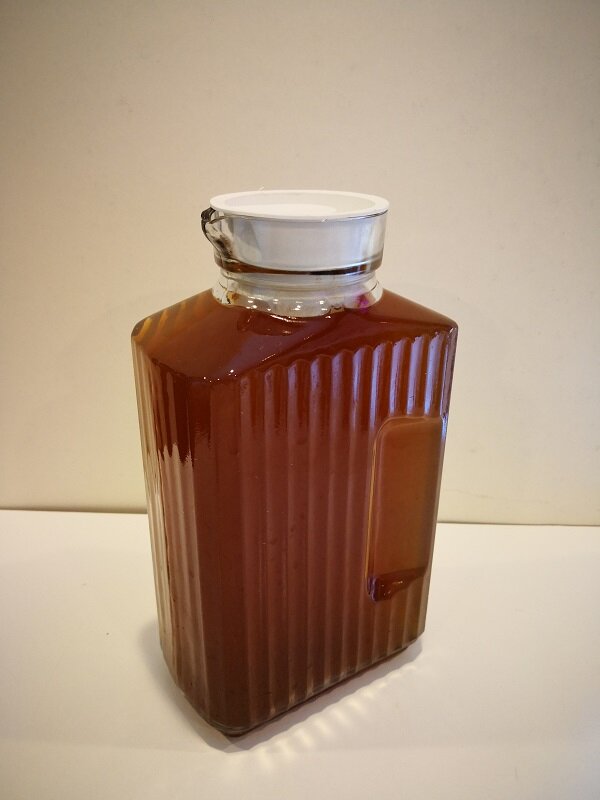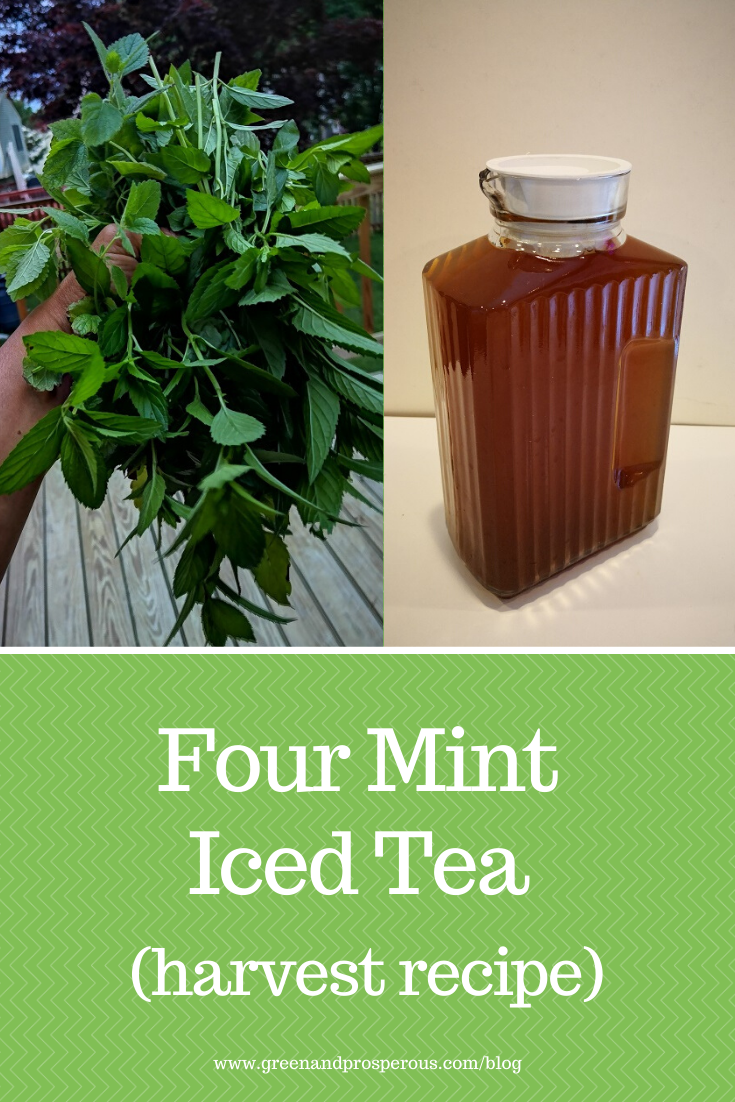Four Mint Iced Tea (harvest recipe)
/Updated 03/19/2025
If there is one plant anyone can grow, it’s mint. This perennial, hardy herb isn’t very fussy: it needs moist soil and prefers partial shade, although it will also grow happily in full sun as long as you keep it watered and fertilize with a liquid fertilizer at least every 6 to 8 weeks. Left to its own devices, it will take over your growing space, so it’s usually best to grow mint in containers. Even a small container of mint can provide you with an ample amount of herb to use in teas and culinary dishes, and clipping once the stem has produced several sets of leaves will encourage the plant to produce more. In fact, it’s best to clip the leaves on a regular basis for a healthy plant that will offer you an abundant harvest.
One benefit of growing mint is its ability to repel pests. Rub the leaves of spearmint or peppermint over your skin before you go outside to repel mosquitos and flies. These plants are also said to repel spiders; in my experience peppermint works best as a spider repellent when used as an essential oil; sprinkle a few drops of peppermint oil around your home to keep these arachnids away. Pennyroyal mint is reputed to repel fleas and ticks. These varieties of mint can be an effective tool for practicing eco-friendly pest management techniques in your garden.
Mint is also great as a digestive aid: it works to control inflammation, relax muscles and kill harmful microbes. Clinical studies have shown it to be effective in the treatment of IBS, stomach pain in children, and sickness after surgery. It also works as an anti-nausea agent and an effective remedy for cold symptoms, including dispelling excess mucus in the sinuses and chest. Mint contains menthol, which when applied as an ointment or rub on the chest, can work overnight to reduce the severity of cold symptoms.
Aside from these medicinal properties, it makes a wonderfully aromatic and great-tasting hot or iced tea!
There are several varieties of mint that go into this recipe, including spearmint, peppermint, and lemon balm. Spearmint has leaves that are lighter in color and somewhat wider in shape than mint and peppermint, with pointed tips. It is useful as an aid for indigestion, gas, nausea, and headache, toothache, and sore throat, among other ailments. Peppermint makes a great addition to sweet dishes and salads and as a chilled tea can also help treat sunburn (just apply to the affected area with a cotton pad soaked in the tea)! Aside from its usefulness in repelling spiders, peppermint oil is used to treat IBS (Irritable Bowel Syndrome), tension headaches, sore breasts from breastfeeding, bed sores, and a number of other disorders. Lemon balm is lighter in color than the other 3 mints. This sprawling, bushy herb grows naturally in sandy areas but can adapt to a variety of environments. It has been used since the Middle Ages to reduce anxiety and stress, aid sleep, increase appetite, and to relieve the symptoms of indigestion.
spearmint plant
This tea is easy to make and tastes best cold. You can add more or fewer sprigs of herbs to suit your taste.
peppermint plant
lemon balm plant
Prep time: 20-25 minutes (plus steeping 8 hours or overnight)
Tools and/or vessels needed: large stainless-steel pot for boiling water
Makes about a gallon
Ingredients:
4-5 large sprigs of fresh mint
4-5 large sprigs of fresh peppermint
4-5 large sprigs of fresh spearmint
4-5 large sprigs of fresh lemon balm
¾ cup honey (alternatively, you can make a sugar syrup; see below)
3 teabags of black tea (I used Lipton tea, but PG Tips also works very well)
2 fresh lemons
Process:
1. Soak mint and lemon balm sprigs in a baking soda bath (2 tsp baking soda to 1 qt water) for 5 minutes, then rinse in clear water. This helps to clear pesticide residue (yes, do this even if you are using organic pesticides!)
2. Place sprigs and tea bags in 6-quart stainless steel pot
3. Fill pot with about 4.5 quarts water
4. Bring to a boil, then reduce heat and let simmer for 10 minutes
5. Add honey or sugar syrup to the mix and stir well until dissolved
6. Remove tea bags from pot
7. Cover pot and remove from heat
8. Let sit overnight or at least 8 hours
9. Remove sprigs from pot; strain out any stray leaves
10. Squeeze juice from 2 lemons in pot
11. Store in glass jar or pitcher for up to 10 days
Drink on hot summer days for cool relief!
Like this? Please pin!





